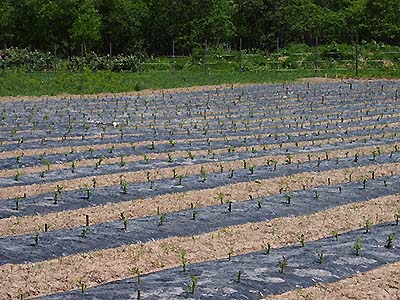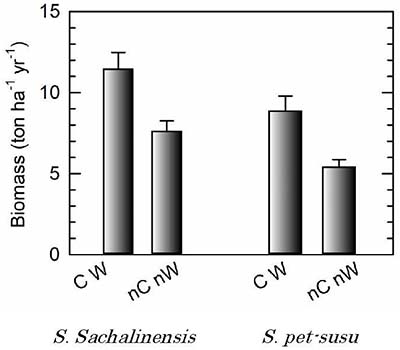Home > Research > Research Results > Research Results 2020 > The cultivation of short-rotation willow is becoming practical through the use of agricultural mulch
Update:July 31, 2020
Main content starts here.
The cultivation of short-rotation willow is becoming practical through the use of agricultural mulch
| Article title |
High biomass productivity of short-rotation willow plantation in boreal Hokkaido achieved by mulching and cutback |
|---|---|
| Author (affiliation) |
Qingmin Han (a), Hisanori Harayama (b), Akira Uemura (a), Eriko Ito (b), Hajime Utsugi (c), Mitsutoshi Kitao (b), Yutaka Maruyama (d) (a) Department of Plant Ecology, FFPRI, Tsukuba, Ibaraki Japan. (b) Hokkaido Research Center, FFPRI, Sapporo, Hokkaido, Japan. (c) Principal Research Director, FFPRI, Tsukuba, Ibaraki Japan. (d) Nihon University, Fujisawa, Kanagawa, Japan. |
| Publication Journal |
Forests, 11(5), 505, May 2020 DOI:10.3390/f11050505( External link ) |
| Content introduction |
The use of biomass energy is attracting attention for resolving environmental issues such as global warming. In order to efficiently produce wood biomass, collaborative research has been conducted with the town of Shimokawa in Hokkaido to cultivate vigorously-growing willows that can be harvested in just a few years. For practical use, there are some issues to be resolved, such as further increasing yield and reducing production costs. The key to this is controlling weeds that compete with willows for water and nutrients. Therefore, we have been working to develop techniques for increasing yields through a combination of controlling weeds by laying agricultural mulch, and promoting multiple stem sprouting by cutbacks. First, soil is tilled and laid with agricultural mulch, then planted with unrooted cuttings of S. sachalinensis and S. pet-susu in the spring (Photo). Next, cutback is done by coppicing the first year’s growth of above-ground shoots in the winter of that year. Then, in the following spring, an herbicide was sprayed to control the weeds that had grown between mulched sections. When just mulch was installed, yields of 6.5 tons/ha/year were achieved in a 3-year period. However, in addition to mulch, the application of cutback practices and the spreading of herbicide between mulched areas could increase the yields of S. sachalinensis and S. pet-susu to 11.4 tons/ha/year and 8.8 tons/ha/year, respectively. The results of this research will lead to the establishment of short-rotation cultivation techniques for willows as a biomass resource plant, and will contribute to the expansion of production and a stable supply of wood biomass.
Photo: A willow plantation using agricultural mulch.
CW: with cutback and weeding Figure. A comparison of the effects on willow yield for two cultivation techniques: cutback and weeding between mulched areas, and no cutback/ no weeding. |
Copyright © Forest Research and Management Organization. All rights reserved.


